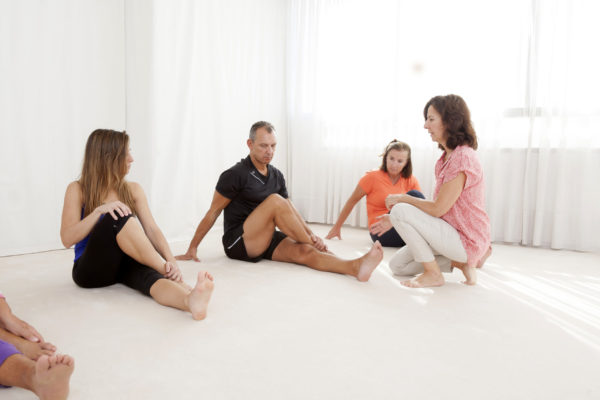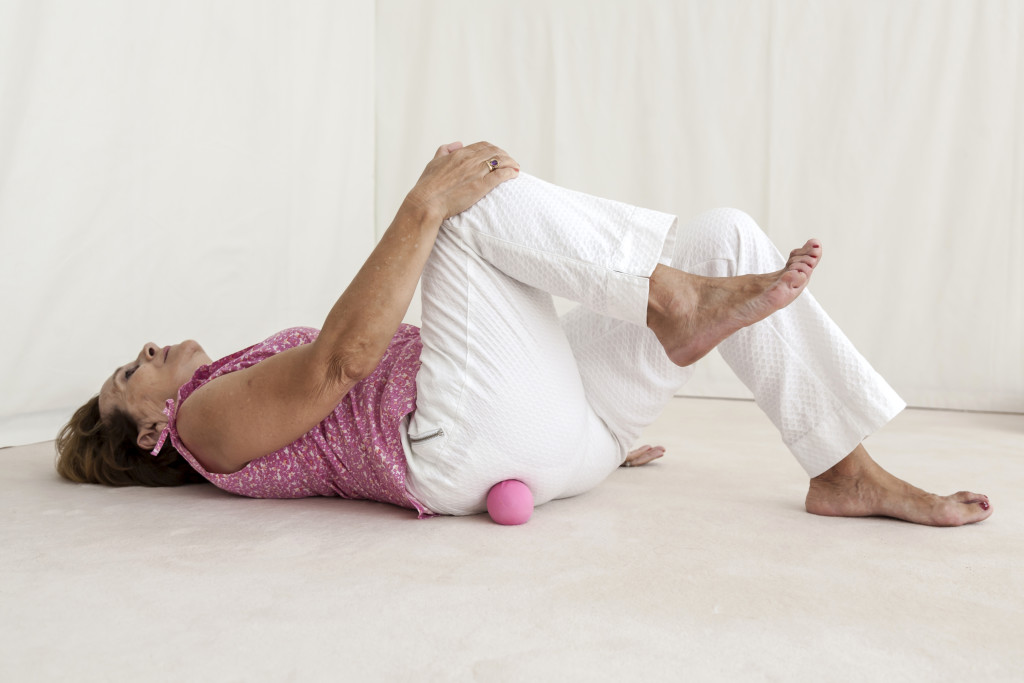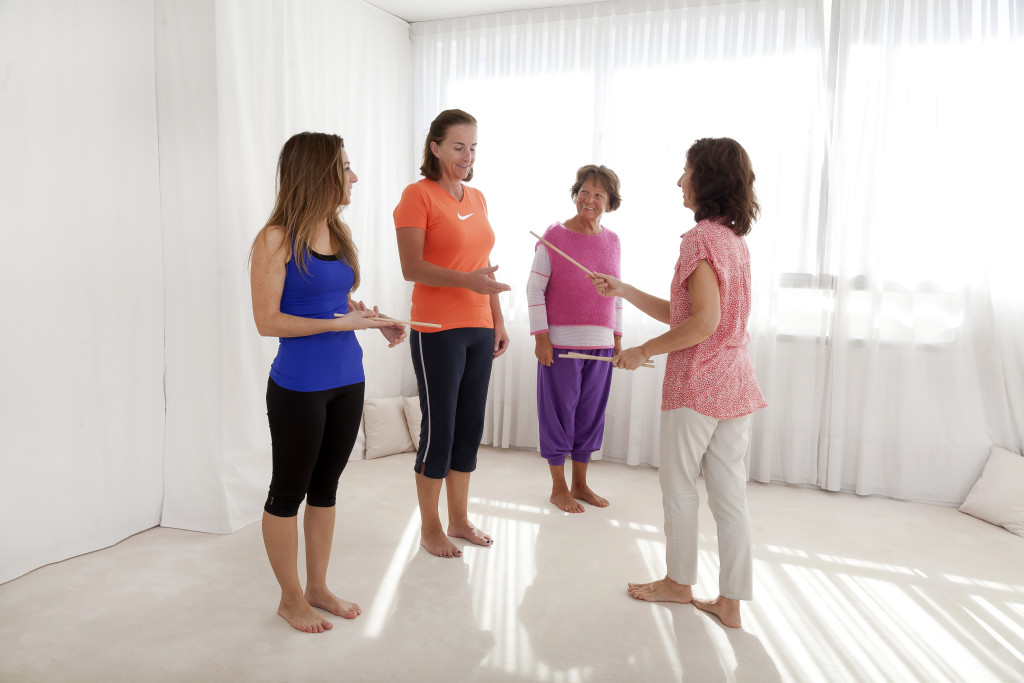An Antigym class
What happens during an Antigym class
Movements! Movements that are simple, different, novel, and fun!
For example, moving the toes, sticking the tongue out, or rotating the eyes. Or, standing with the feet together, heels touching and big toes touching, trying to rotate the knees out without bending them.
All the movements are extremely respectful of everyone’s body and physiology. These apparently simple movements deeply impact the musculature.
Meaningful movements
All the movements have a precise objective and contribute to the logical progression of the class.
The spoken word
The practitioner is like a storyteller, using words and images to guide participants through the movements.
At times during the class, participants are free to relate their sensations, their feelings, and their thoughts.
No competition
Participants perform the movements at their own rhythm and to the extent possible at that particular time.
There is nothing to achieve, no standard to reach. It is useless to try to perform a movement “successfully”.
Rather, it is sometimes more interesting to “fail” a movement and, by doing so, to discover what one’s body cannot yet do, does not dare to do, or has forgotten how to do.
Balls, dowels, doudous, and doudines
Wooden dowels, cork balls and small, spelt-filled pillows that we have named doudou and doudine are used to facilitate the movements or to help locating different body parts.
Small groups
Antigym® is practiced in small groups in a silent, bright and comfortable room.
The stages of an Antigym class
Stage 1: A kind of test to determine your limits.
The practitioner asks you to adopt a specific, demanding, and strict position. This anatomically correct position requires that your musculature possesses its natural length. It is a position that no one ever assumes; rather, it is a position that everyone always avoids.
To be able to hold this position, your body does what it does naturally, but this time, something becomes obvious: it twists and contorts. One of your shoulders lift, one of your legs move sideways, your toes twist. Why? Not because, as is often thought, your muscles are weak, but because they are rendered powerless by excessive force.
A super strong muscle group that causes you to fold in half, that cuts your breath, and that, clearly, prevents you from following the orders given by your brain. This is something that you can no longer ignore.
Stage 2 : In the second part of the class, you access each of your muscular knots,
To better sense the effects of a movement, you can start by working with one side of your body. This allows you to sense the subtle differences with the other side, the side that has yet to work. The side of the body that has worked suddenly seems much more comfortable, alive, present, at ease. Your only desire? “ To do ” the other side!
And after ? Slowly, little by little, you patiently start to unravel the complicated knots of your musculature. Class after class, your body progressively learns to free itself. It relaxes and regains its true height, its natural beauty, and its inner peace.
Scheduling
Depending on your schedule you can choose between weekly classes (1.5 hour long) and monthly classes (halfday or full day). Workshops (several days) are held during weekends and summer holidays. Before committing to attending weekly or monthly group classes, you will be invited to attend a one-on-one or group “discovery” class led by a certified practitioner.
Finding a certified practitioner
Find a practitioner in the Where to practice Antigym® section which features the complete directory of our certified practitioners, including studio coordinates and teaching schedules (classes, workshops, etc.).
Recommended attire
Comfortable pants and top, preferably made of natural fibers (cotton, wool, etc.). The feet are bare. It is recommended that you remove jewelry, watches, glasses, contact lenses, and anything that prevents freedom of movement.







